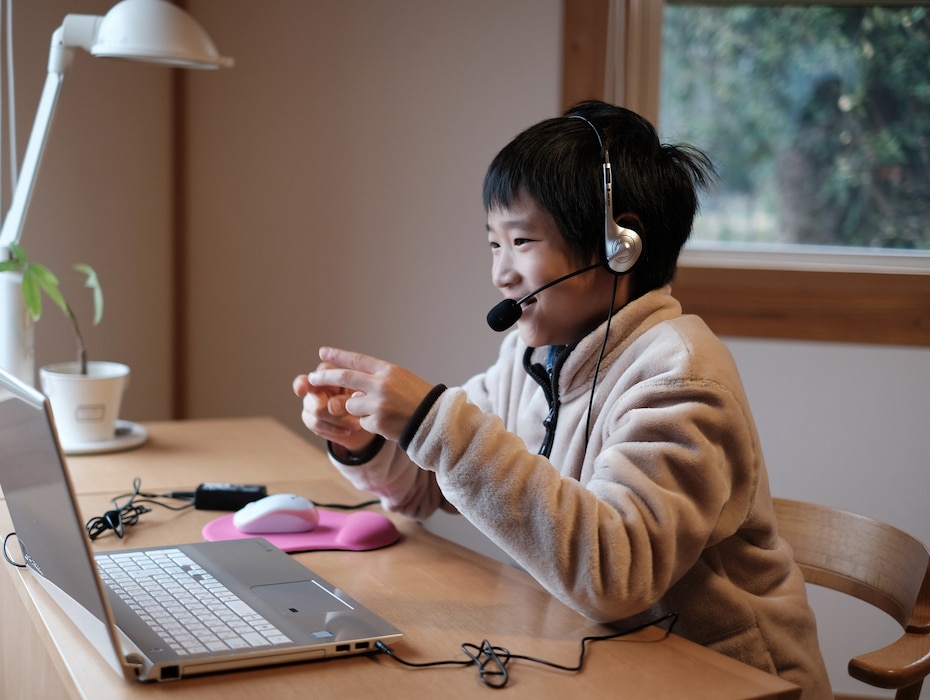Highlights
- Teachers need support as they handle a hybrid learning environment and deal with the added stress of fewer fellow educators during the Great Resignation.
- Providing teachers with the communication tools they need to navigate hybrid learning environments is essential to avoiding stress.
- Teachers that enable group learning projects often find success with hybrid learning.
👩🏫 💻 📚 Need a refresher on virtual learning best practices? Grab our ebook for tips, techniques, and tools.
Hybrid learning: it’s a new world of education, and for many teachers and students, it can feel overwhelming. How can you maintain classroom connection and consistency for your students in a learning environment that moves between online and classroom learning? How can you avoid burnout when other educators are leaving the teaching profession in droves as part of the Great Resignation?
How to create a better hybrid learning environment
RingCentral’s tools for hybrid learning can help you create a better hybrid learning environment, and they can make your teaching life easier.
1. Provide simple channels for communication
One of the biggest educational challenges that students, parents, and teachers have had in the last two years is the logistical difficulty of figuring out how online classes work. Where is the information about your next assignment? When is the next online class, and how do you log in?
When you are moving between different learning options, it’s easy for students to be left behind. Teachers can be easily overwhelmed by the details of online learning and all of the questions that arise from it.
Instead of having multiple students emailing for a link or an assignment, adopt a school communications hub such as RingCentral. With our virtual classrooms, you can record lessons, connect quickly via message, phone or video, and provide a communications system for your students so that teachers are not the only point of contact: the virtual classroom is the hub instead.
Stay informed with RingCentral
2. Provide opportunities for authentic connection
When learning is online, then offline, then online again, it’s important for students and teachers to have opportunities to connect with each other in meaningful ways, as human beings who are going through some challenging times together.
When learning suddenly shifted online in 2020, many teachers felt the loss of the vibrant, in-class connection with their students. Providing multiple opportunities for connection within a virtual classroom hub can help your students connect with teachers and each other in both formal and informal ways.
For example, RingCentral allows students to connect within a meeting through messaging, so that online learning feels more like a classroom environment. You can also archive all your lessons in your LMS for an archive or on-demand playlist to allow learners to move at their own pace.
3. Enable group learning opportunities
Group learning gives students the opportunity to work through questions together. If you have some students working online and some in person or you’re alternating between the two formats, it can be difficult to encourage students to work on projects together. However, according to the Eberly Center at Carnegie Mellon University, one of the benefits of group work for both instructors and students is that instructors can assign more “complex and authentic” projects to students when they work in groups, and groups are more likely to approach topics in novel ways via breakout room technology.
Seeing students avidly engaged in group work is one of the delights of classroom teaching. A virtual classroom environment can help students begin to collaborate like this in the online world as well, bringing those vibrant conversations and connections from the physical to the virtual classroom.
4. Build a resource bank
With hybrid teaching, there is an opportunity to develop a bank of resources that students can use to extend their learning. If they’re in class, you can use these resources in the classroom setting or assign them for homework. If they’re at home, you can use these resources to supplement your lessons, so that students have the opportunity to move beyond the lesson content.
For example, students in a hybrid learning environment at the elementary or high school level could have a lesson on biology that focuses on habitats, developed and directed by you. They could have discussion or reflection questions that they can do at home or in an in-person or online group. Finally, you can use resources such as National Geographic or YouTube videos from biologists to extend their learning so that they can develop a project or extend an inquiry.
With digital resources and extensions, the focus does not need to be on teachers’ lessons all the time. Teachers can also share resources across classes and with each other, saving time. A hybrid online classroom model gives you the opportunity to invite students to engage with a wide variety of media.
5. Ensure access to technology to enable hybrid learning
For many students, access to technology is a barrier to hybrid learning. If a household only has one computer and an iPad, and three family members need them for work and school, something has to give. Teachers see students falling behind in class, and that makes their teaching life more challenging as well. However, not all teachers have the tools to develop online lessons and materials. Creating class websites is not a skill that many people have developed while in an in-person teaching environment.
Give teachers the gift of educational infrastructure so they can develop online lessons. Ensure that everyone has access and can stay engaged by giving teachers the opportunity to upload lessons, assignments, and links to a virtual classroom.
6. Create resources for parents
If you’re working in an elementary or a high school context, parents will be involved in their child’s education to some degree, depending on the child’s needs. Having an online classroom gives you the opportunity to upload an introduction, a video or written FAQ, and ongoing lessons and assignments. This reduces the communications load for teachers since parents now have a place to go to answer their questions. With RingCentral, you can even create private teams specifically for parents to connect.
7. Give tools to navigate overwhelm
Students, parents, and teachers are all overwhelmed. During stressful times, it can be a challenge for everyone to show up as their best selves in class.
As a staff team and as individual teachers, think critically about what core activities and learning you want to use as the foundation of your plan for the day, the week, or the year. Consider how you can take that core and give students opportunities to move beyond it, while ensuring that you are addressing the core learning that students must achieve. A virtual classroom can help build infrastructure to deliver those core lessons while providing opportunities for extension.

A learning and communications hub can support students
How can you make hybrid learning easier? The key is to have a learning and communications hub that can support students wherever they are. Whether you are working in a physical classroom or online, RingCentral’s virtual classroom tools can help you streamline parent and student communications, create lessons and add resources, and encourage connection between students. Visit us at RingCentral and see how it works.
Updated Jul 26, 2024












